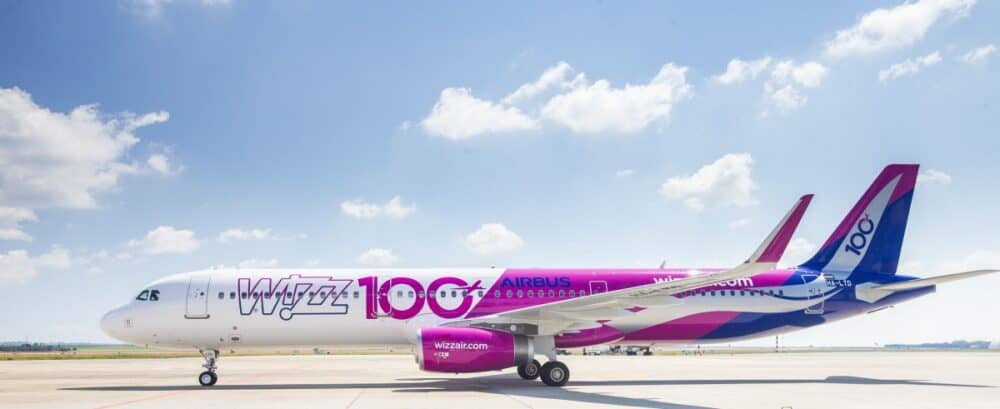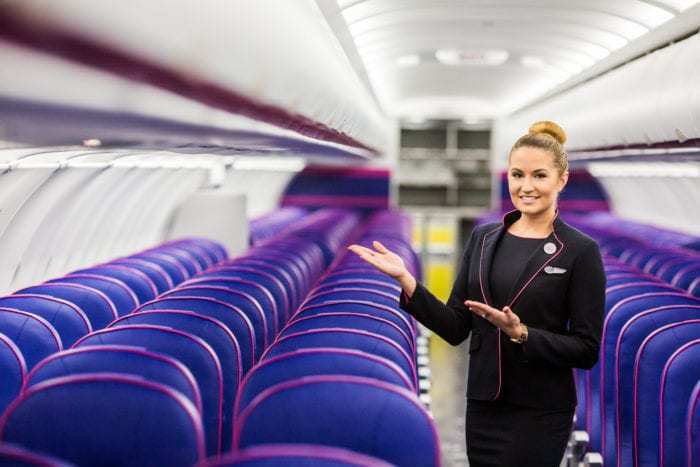Wizz Air is a European low-cost carrier based out of Budapest, Hungary with operations rapidly expanding across the region and even as far away as Abu Dhabi in the UAE. Founded in 2003, the airline has grown to become one of Europe’s leading low-cost carriers. With two-hour-long flights going for as little as $21 each way, how is the airline able to offer fares at such low cost? Let’s find out.

A ‘relentless focus on costs’
While the name and category of ‘low-cost carrier’ can be used to describe the cheap ticket prices, it is more about the low-cost of the airline’s operations. According one of Wizz Air’s recent earnings reports, it has a “relentless focus on costs”.
Here are some ways the airline keeps its operating costs low:
- A single-type fleet (the Airbus A320 family of jets) means that all ground crew, cabin crew, and pilots only need to train for one model. This also means that if there is a problem with one aircraft, it is much easier to source a replacement with the same seating configuration. This plane-swapping, of course, wouldn’t be as easy between an A320 and A321.
- Furthermore, by making most of its fleet leases, the airline can ensure it has a young collection of fuel-efficient and reliable aircraft. This mitigates downtime for maintenance as well as fuel costs – normally the single largest expense for an airline.
- Wizz Air’s cheapest tickets are usually for flights that depart or land at less-than-ideal times. This could mean departing extremely early in the morning or coming in on the last flight of the night. In some cases, Wizz Air can be found in a separate satellite or budget airline terminal – one that is stripped of the usual airport comforts many of us have become used to. This further drives down the cost of the airline’s operations at airports.

Economies of scale
Wizz Air, like other low-cost carriers, has a business model based on economies of scale. Rather than taking a large profit from each traveler, the airline takes a smaller profit while carrying more passengers. This is why you won’t find a premium cabin on any of Wizz Air’s planes.
In fact, the airline has one of the densest configurations on the market. Its Airbus A321s have 230 seats in a single class configuration. This is far more than British Airways’ A321 European configuration, which has 54 in business and 123 in economy. Of course, this comes at the cost of comfort to the passenger: Wizz’s seat pitch is a meager 28 inches while the standard for most airlines (even Ryanair) is 30 inches. On the flip-side, the airline can squeeze in a few additional rows of seats and sell more tickets.
Furthermore, the airline ensures its aircraft are flying as frequently as possible. This means tight turnaround times at airports, making the boarding and deplaning process as quick as possible. Part of this is achieved by boarding using both the front and rear doors of the aircraft via stairs.

An extremely basic ticket
The more relatable answer for those who travel on Wizz Air is the fact that the airline’s posted fares leave out a lot. While full-service airlines might have a complimentary snack and beverage service, this is absent from Wizz Air.
The passenger experience is basic in other ways as well. The initial airfare that you see doesn’t include checked baggage or even a ‘full size’ carry-on. Rather, for the basic fare, you are limited to what can fit under the seat in front of you.
Anything and everything else you may expect to be included in the flight experience is stripped and comes at extra cost. This includes things like seat selection and checking-in at the airport.
By doing these things, the airline can boost its ancillary revenue while you, the customer, only pay for what you need.

Conclusion
As you can see, the reasons that Wizz Air’s tickets are so cheap are similar to many other budget carriers: They leave out the ‘extras’ and leave customers to pay additional fees for them. Like other budget carriers, Wizz Air also depends on a high volume of flights with a high-density configuration on board to pack as many passengers in as possible.
The notable difference seems to be that Wizz Air’s seat pitch is less than its European competitors Ryanair and easyJet.
Have you flown on Wizz Air before? Is it worth the price of the ticket? Let us know in the comments.